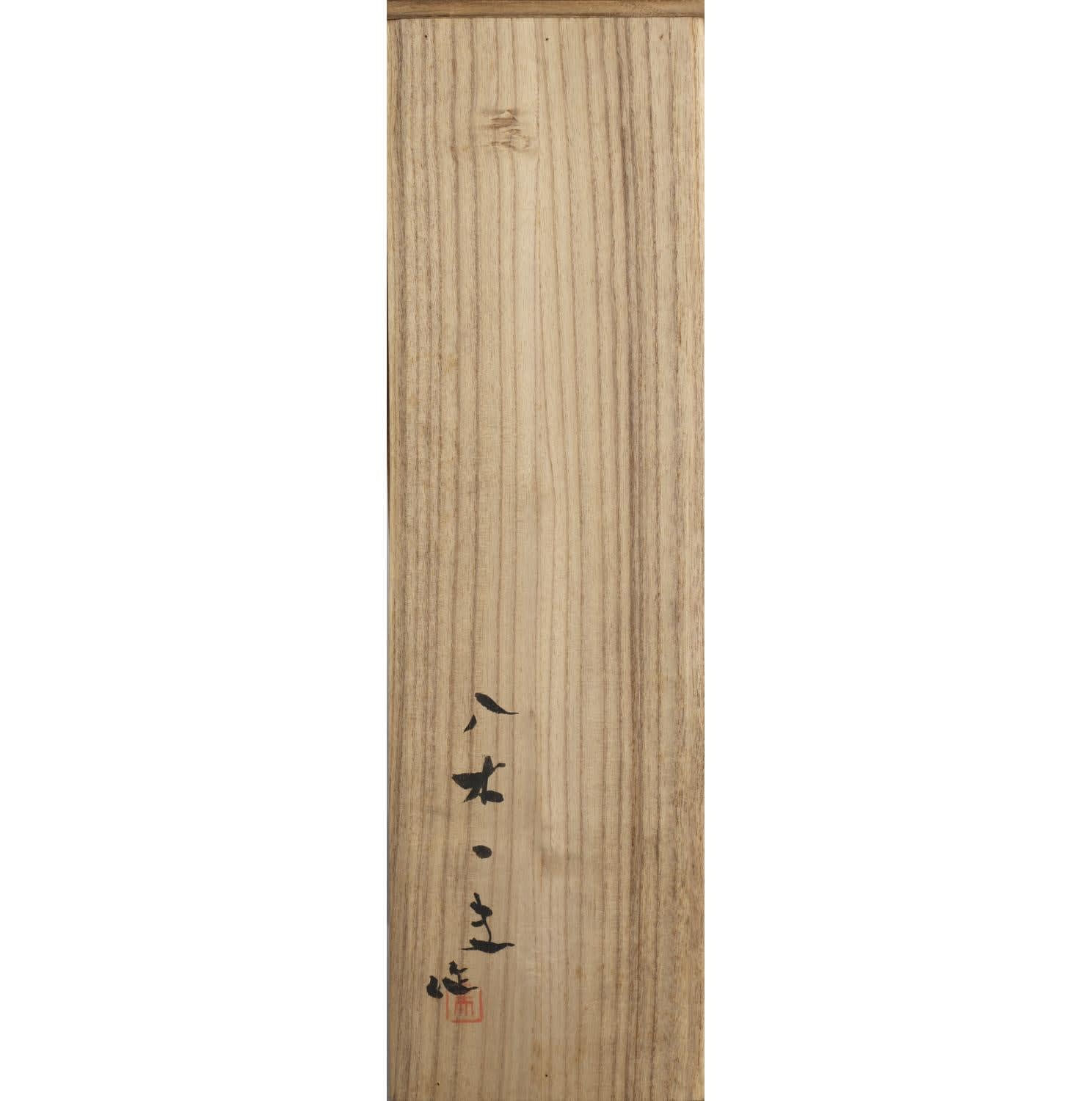Yagi Kazuo (1918−1979)
Deformed Vase
Sealed “※” on foot
With a box signed by the artist
W14.5 x H52.5 cm
Further images
White slip is applied to the surface resulting in an irregular texture as well as reflecting the light. The upper side of the vase is flattened, where three holes are made. It gives an impression of non-utilitarian at first glance; yet two mouths are opened on the top, implying that this is a vessel.
Yagi Kazuo is fond of such techniques including kokuto, or black ware, yakishime, or unglazed high firing, and shirogesho, or white slip coating, as to avoid uncertainty or ambiguity resulting from the firing process. Applying white slip to the surface without any decoration, this work leads the viewer to focus solely on the form itself that the artist attempts to represent.
As a leader of Sodei-sha, the Kyoto-based postwar avant-garde ceramicist group, Yagi states, “the process of pottery making should be a manifestation of artist’s intrinsic value; the artist should straightforwardly connect himself with the work.” To deny utilitarian is never Yagi’s purpose. While seeking for the non-vessel object in the making throughout his artistic career, Yagi also identifies himself as merely “a teacup maker,” unceasingly producing tea bowls until his late years. Yagi’s works, constantly exploring his inner self among the contradictories, reminds the viewer of his passion for creating his unique aesthetics.
Yagi Kazuo (ceramist; 1918−1979)
Kyoto-born ceramist. Initiated and lead an avant-garde ceramist group Sodei-sha with Suzuki Osamu, Yamada Hikaru, and others; pioneered the revolution in Japan’s ceramic field. Exhibited intensively in and out of Japan. Awarded the Grand Prize at the second and the third International Ceramic Exhibition.
Yagi Kazuo is fond of such techniques including kokuto, or black ware, yakishime, or unglazed high firing, and shirogesho, or white slip coating, as to avoid uncertainty or ambiguity resulting from the firing process. Applying white slip to the surface without any decoration, this work leads the viewer to focus solely on the form itself that the artist attempts to represent.
As a leader of Sodei-sha, the Kyoto-based postwar avant-garde ceramicist group, Yagi states, “the process of pottery making should be a manifestation of artist’s intrinsic value; the artist should straightforwardly connect himself with the work.” To deny utilitarian is never Yagi’s purpose. While seeking for the non-vessel object in the making throughout his artistic career, Yagi also identifies himself as merely “a teacup maker,” unceasingly producing tea bowls until his late years. Yagi’s works, constantly exploring his inner self among the contradictories, reminds the viewer of his passion for creating his unique aesthetics.
Yagi Kazuo (ceramist; 1918−1979)
Kyoto-born ceramist. Initiated and lead an avant-garde ceramist group Sodei-sha with Suzuki Osamu, Yamada Hikaru, and others; pioneered the revolution in Japan’s ceramic field. Exhibited intensively in and out of Japan. Awarded the Grand Prize at the second and the third International Ceramic Exhibition.









